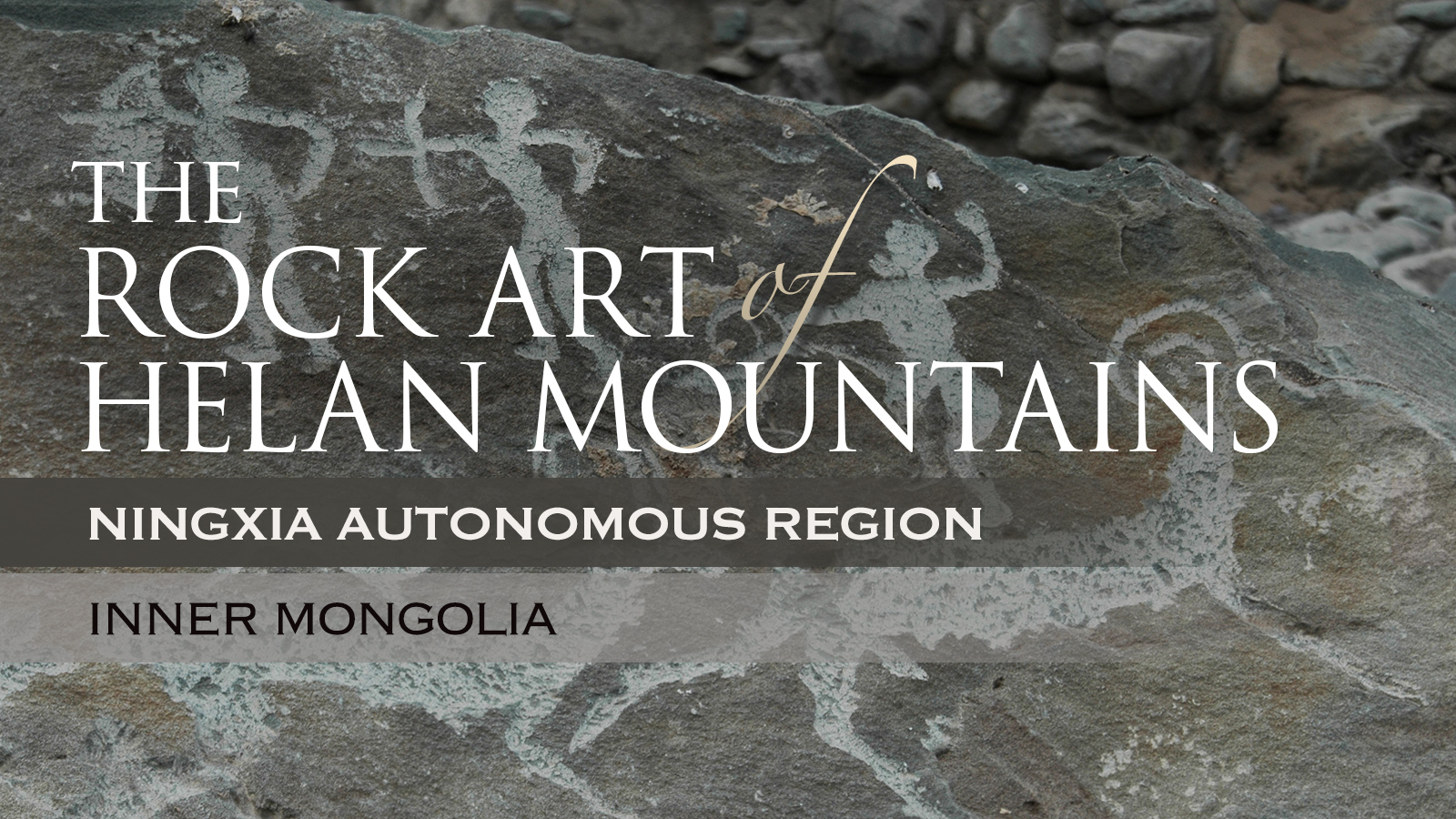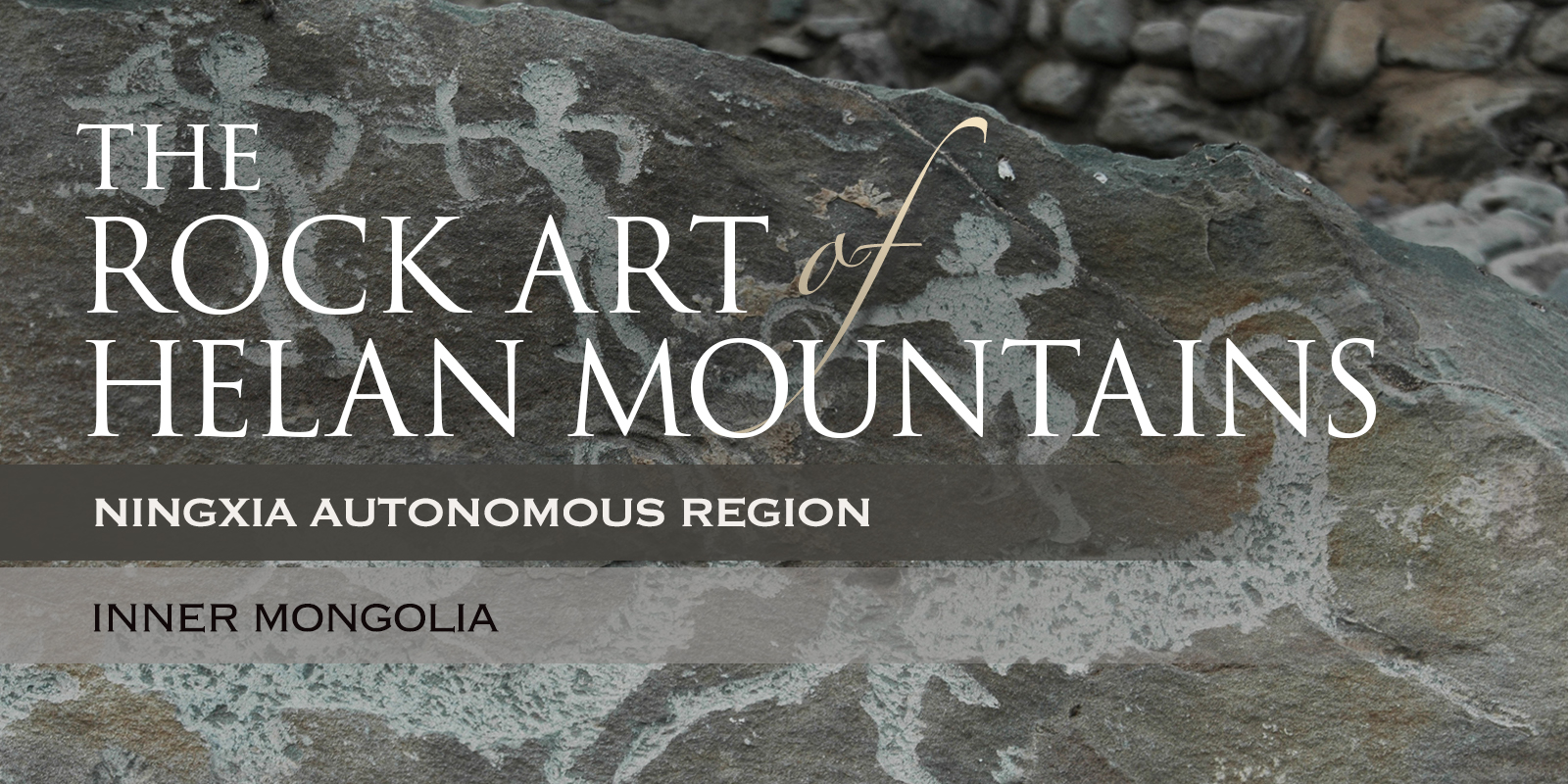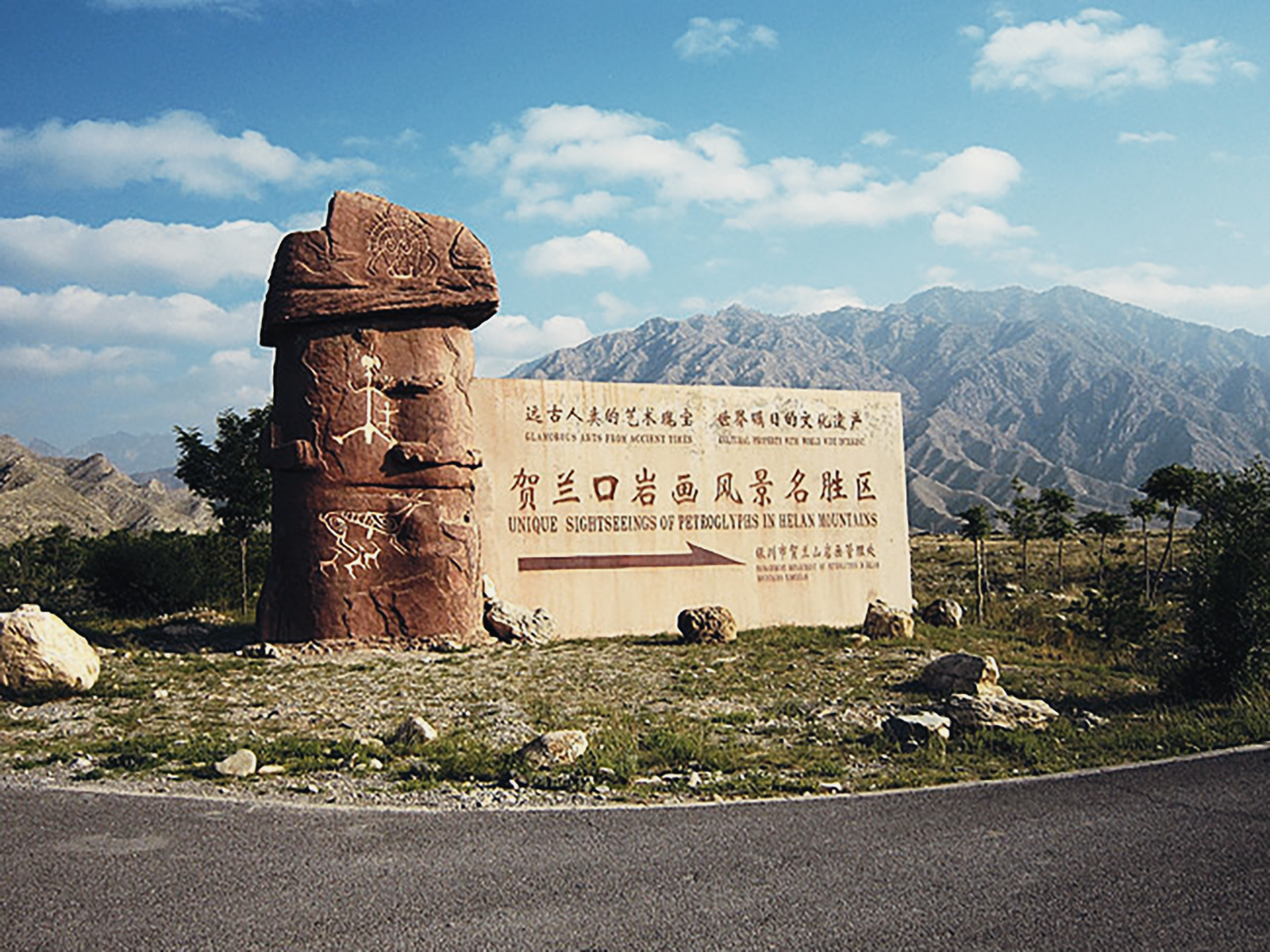


Participants: Damon de Laszlo, Dr. Jill Cook, Peter Robinson, Li Hui.
Text by Damon de Laszlo, Bradshaw Foundation Chairman
The purpose of this Field Trip was two-fold; to view the rock carvings of the remote Helan Mountains of Inner Mongolia, and to establish a collaboration and partnership between the Bradshaw Foundation and the Yinchuan World Rock Art Museum located at the foot of the mountains.
The Bradshaw Foundation now documents rock art and the major rock art sites throughout the world, but for some time I have been conscious of the distinct lack of representation and information on the rock art of China. On closer inspection, we assessed there to be major rock art sites in at least ten provinces, where significant research was being carried out by predominantly Chinese teams. Helankou, within the Helan Mountains, with its carved petroglyphs and unique motifs, is considered one of the most important sites.

The timing of the Field Trip was chosen to coincide with the 2010 Third Annual Rock Art Festival & Seminar, held at the Yinchuan Museum and the Northern Nationalities University in Yinchuan. The Festival was officially opened, on a sunny morning on the steps of the Museum with the jagged Helan Mountains behind, by Mr. Mi, President of the Northern Nationalities University. The opening speeches were followed by the exchange of gifts between the Foundation & the Museum. As Chairman of the Foundation I presented an edition of the aluminium cast of the Dabous Giraffe carving taken some years earlier in the Sahara. Mr. Li, the Curator of the Yinchuan Museum of World Rock Art, in turn presented the petroglyph rubbing of the 'Sun God', the iconic petroglyph of Helankou. The Bradshaw Foundation's representative Li Hui acted as interpreter.
Professor Chen Zhaofu, the tireless campaigner bringing the rock art of China to the attention of the rest of the world, and an executive member of the International Rock Art Committee, then spoke of his hopes for the future of rock art research in China, and the role that the Museum would play in that. The Professor had initiated the contact with the Bradshaw Foundation and the subsequent visit to the Museum, and his lifetime'í's work in discovering and documenting the rock art has now been honoured by the Museum.
There then followed an intriguing drumming and dancing ceremony to celebrate the ancient artistic legacy and early culture of the Helan Mountains.
In the discussions that followed, members of the Bradshaw Foundation were able to propose to the Yinchuan Museum that the Bradshaw Foundation's website should act as the internet portal for the research and documentation of Chinese rock art [all to be channelled through the Museum] - in English & Chinese, in the hope of ending the poor representation.
Bradshaw Foundation also proposed that it would provide advice and contacts for curatorial matters, under the guidance of Dr. Jill Cook of the British Museum, as well as advice on rock art research and documentation techniques. Following her recent curatorial work at the new museum at Cresswell Craggs in England, Jill is especially qualified in such matters.
In order to consolidate the Bradshaw Foundation's proposals, the Museum requested the incorporation of Professor Stephen Oppenheimer's Journey of Mankind Genetic Map into the Museum's permanent exhibition, in order to provide a context for the rock art sites in China. The Map, eventually to be translated, could be run as a loop as well as an interactive map.
Photographs from the Bradshaw Foundation Field Trip to view the rock art carvings of the Helan Mountains of Inner Mongolia in China. The main concentration of rock art carvings is found at Helankou, the dramatic gorge cutting north-west through the mountain chain, and this constitutes the Helankou Rock Engravings Park.
Yinchuan, the provincial capital of Ningxia Autonomous Region, lies in the middle of the Yinchuan or Ningxia Plain. It is sheltered from the deserts of Mongolia by the high ranges of the Helan Mountains to its west. The Yellow River runs through Yinchuan from the southwest to the northeast. The average elevation of Yinchuan is 1,100 meters (about 3,608 feet). The Ningxia Autonomous Region of China lies within the older geographical term of Inner Mongolia.
The main concentration of carvings in the Helan Shan - the Helan Mountains - is found at Helankou, the dramatic gorge cutting north-west through the mountain chain, and this constitutes the Helankou Rock Engravings Park. The Helan Shan has acted as a boundary between the nomadic pastoralists to the north and the sedentary farmers to the south. As such, it has been a meeting place between the two lifestyles, and celebrated by the practice of engraving art in the rocks.
The Yinchuan World Rock Art Museum, barely 2 years old and designed by Chinese architects including Ms. Li, the current Vice-Mayor, sits proudly yet sympathetically at the foot of the Helan Mountains, near Helankou. 'Helankou' refers to the Helan 'Gorge'.
Over 6,000 engravings have been documented at Helankou. The engravings have clearly been produced over a considerable period of time, somewhere between 3,000 and 10,000 years ago.
The engravings depict human figures, animals and symbols. The human figures portray scenes of hunting, herding, sacrificing, battle, dance and procreation. The animal engravings depict tigers, leopards, sika deer, sheep, cattle, horses and camels. The symbols mainly consist of mask like faces [708], the most conspicuous of which is the Sun God engraving.
The meaning of the engravings, as elsewhere in the world, remains speculative. Many researchers attach shamanic significance to the carvings, whilst others suggest less 'spiritual meaning'.
In Professor Paola Dematti's paper 'Beyond Shamanism: Landscape and Self-Expression in the Petroglyphs of Inner Mongolia and Ningxia', she moves away from interpretations which see rock art as a wholly shamanistic phenomenon, introducing territory and iconography as key elements for the understanding of local geographies, cultural interactions, and the agencies of identity. The location of the sites indicates that petroglyphs were next to travel routes and may have served as territory markers and meeting places. In addition, the scattering of marked rocks in key locations suggests that petroglyphs were markers of identity essential for a people who were engaged in a dialectic contention with the expanding agricultural world.
By chance, I was able to discuss this Professor Dematte, who happened to be visiting Helankou at the time of the Festival. Paola Dematte, Associate Professor at Rhode Island School of Design, had visited the site ten years earlier before the Preservation Park was instigated. Clearly, the cost of any preservation will involve the presence of modern intervention, no matter how subtle, which in a prehistoric setting is lamentable. However, the benefits of preservation far outweigh such modern intrusions. Indeed, in terms of protecting the irreplaceable rock art, as well as exhibiting and explaining it, the Park sets a fine example to other rock art sites of this scale.
→ Subscribe free to the Bradshaw Foundation YouTube Channel
→ China Rock Art Archive
→ The Rock Art of Huashan, China - UNESCO World Heritage Site
→ Rock Art of China's Helan Mountains
→ Yinchuan World Rock Art Museum
→ Itinerant Creeds
→ Rock Art of Inner Mongolia & Ningxia
→ The Tiger in Chinese Rock Art
→ Life in Rock Art by Chen Zhao Fu
→ In Search of a Vanishing Civilization
→ The Rock Art of Wushan
→ Ancient Rock Carvings from Dazu
→ Bradshaw Foundation
→ Rock Art Network












































